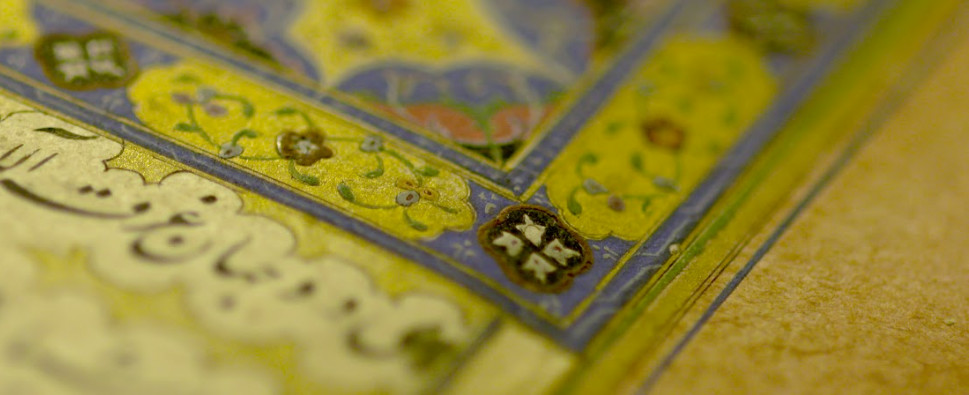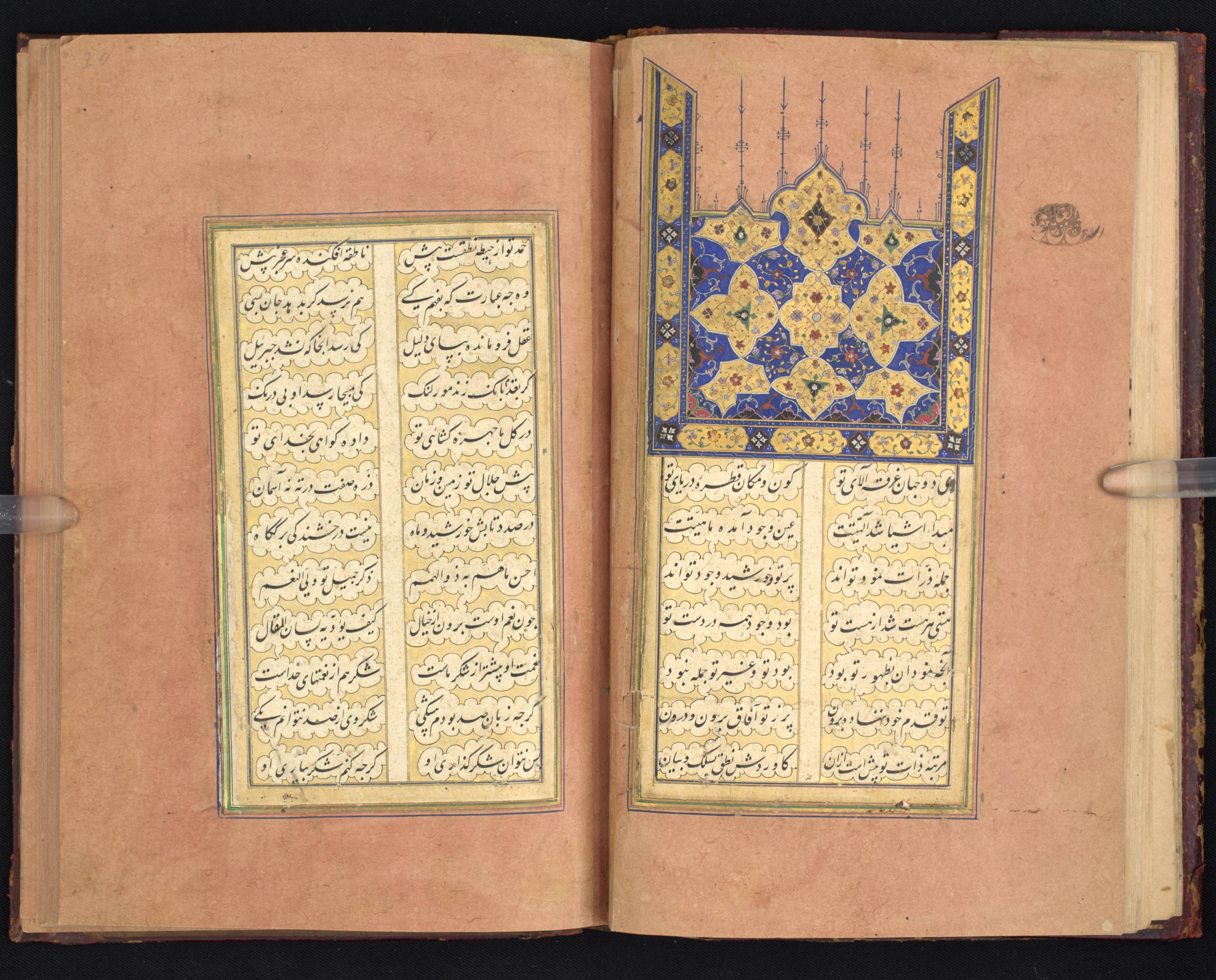
Arts & Culture
Conserving Australia’s cultural record

Didar: Stories of Middle Eastern Manuscripts is a new exhibition from the Grimwade Centre bringing together themes of making and cultural knowledge
Published 8 April 2022
If you had to leave your home, what’s the first thing that you would grab? And what if it had to fit in your pocket?
In the 16th century, when reading from a mobile phone wasn’t an option, people produced miniaturised versions of important texts including religious texts for the purposes of transportability and travel.

Now, Didar: Stories of Middle Eastern Manuscripts, an exhibition from the Grimwade Centre for Cultural Materials Conservation, brings themes of faith and journey as the focus of significant restoration efforts on a number of texts including miniature “travel” Qur’ans.

Arts & Culture
Conserving Australia’s cultural record
Weaving together manuscript journeys and stories of production, the exhibition aims to invoke connections between disparate communities, and promote engagement and critical thinking around the cultural importance of historical artefact conservation.
Sophie Lewincamp and Dr Leila Alhagh of the Grimwade Centre curated the exhibition that includes manuscripts from the Middle Eastern Manuscripts Collection at the University of Melbourne. The exhibition draws upon decades of manuscript investigation including the work of Persian ink conservator and researcher Dr Sadra Zekrgoo.
The Middle Eastern Manuscripts Collection at the University of Melbourne’s Scholarly Services includes texts from a broad range of contexts – school texts, religious texts, legal and court texts – incorporating works from master calligraphers and artists, in a variety of languages from diverse places of origin.
Most of the collection comes from a single collector – Professor John Bowman (1916-2006)
“Professor Bowman worked at the University of Leeds before he moved here and started at the University of Melbourne in 1959. He emigrated with his family, who travelled over together via boat, and the bulk of the Middle Eastern Manuscripts Collection is his personal collection which was donated to the University”, says Ms Lewincamp.
“Of the 190 total pieces in the collection, around 60 will be included in the exhibition, and they are open for research and discovery by people of diverse backgrounds and areas of study.”

Arts & Culture
Restoring one of the world’s rarest maps
“You could be interested in pigments, you could be interested in poetry, or creative writing; there are so many entry points to the collection which is the exciting part,’ says Ms Lewincamp.
A large focus of the exhibition is providing a space for people of all walks of life, from students and staff to community groups, to engage with the works and create new meaning.
More than historical or religious objects, these manuscripts provoke personal, artistic, and cultural meanings, noted community member Reem Sweid.
“It’s akin to listening to your own cultural music as a way that you can connect when you’re feeling disconnected from your culture, and that you’re far away, and you cook your own food, or you listen to your music, and then that can provide you with some comfort,” Ms Sweid says.

“And when you come here, and you touch these manuscripts and you handle it, it’s a bit like that kind of physical way to interact with your own Culture.

Environment
Plants tell stories of cultural connection
“It’s not sensual, like tasting or listening, but it’s a way to kind of feel. I have the same kind of feeling – that kind of connection – of being with something that is a part of me, a part of who I am and part of my sense of identity, and it’s there. And it does find some comfort, knowing that it’s here.”
The international and cross-cultural focus of the texts is a particular point of interest in the exhibition.
MUL 17 is one of the manuscripts in the Middle Eastern Collection of the University of Melbourne. It has two independent books that are bound together in this one volume.
“The first book is a seventeenth-century copy of One-hundred Sayings of ‘Ali ibn Abi Talib’, explains Dr Leila Alhagh.
“These sayings are in Arabic, and then there are their translations in Persian in the form of poetry by Adel ibn Ali Shirazi. The second book is a sixteenth-century copy of Futuh al-Haramayn, which is one of the oldest copies of this text in the world,” Dr Alhagh explains.

“Looking at the illustrations of MUL 17 there are some elements there that haven’t been described in the text, but the illustrator added those elements to the illustrations to point to the special miracles or fables or narratives.
“All these elements help pilgrims to connect to Hajj pilgrimage, and to those special places that were depicted in the manuscripts.”

Each manuscript was carefully condition-checked to ensure it was suitable for display. Numerous page openings have been chosen to prevent damage to the manuscript covers and pages.
The Didar exhibition is on display at the Arts West Gallery Space, and visitors are encouraged to reflect on and engage with the rich collection and examine the manuscripts from their own personal cultural contexts.
Visitors can also learn more about cultural materials conservation, through masterclass workshops and talks around the exhibition including ink making, calligraphy, and creative writing.
“We’re seeing this as the beginning; of it being somewhere where we [the Grimwade Centre] can share knowledge, stimulate interest and energise new uses,” says Ms Lewincamp.
The Didar exhibition is open Monday to Friday, 10am to 4pm, Arts West Gallery Space, Ground Level, Arts West Building.
Banner: Close up illustration on manuscript UniM Bail SpC/BX MUL 17. Credit: Paul Burston